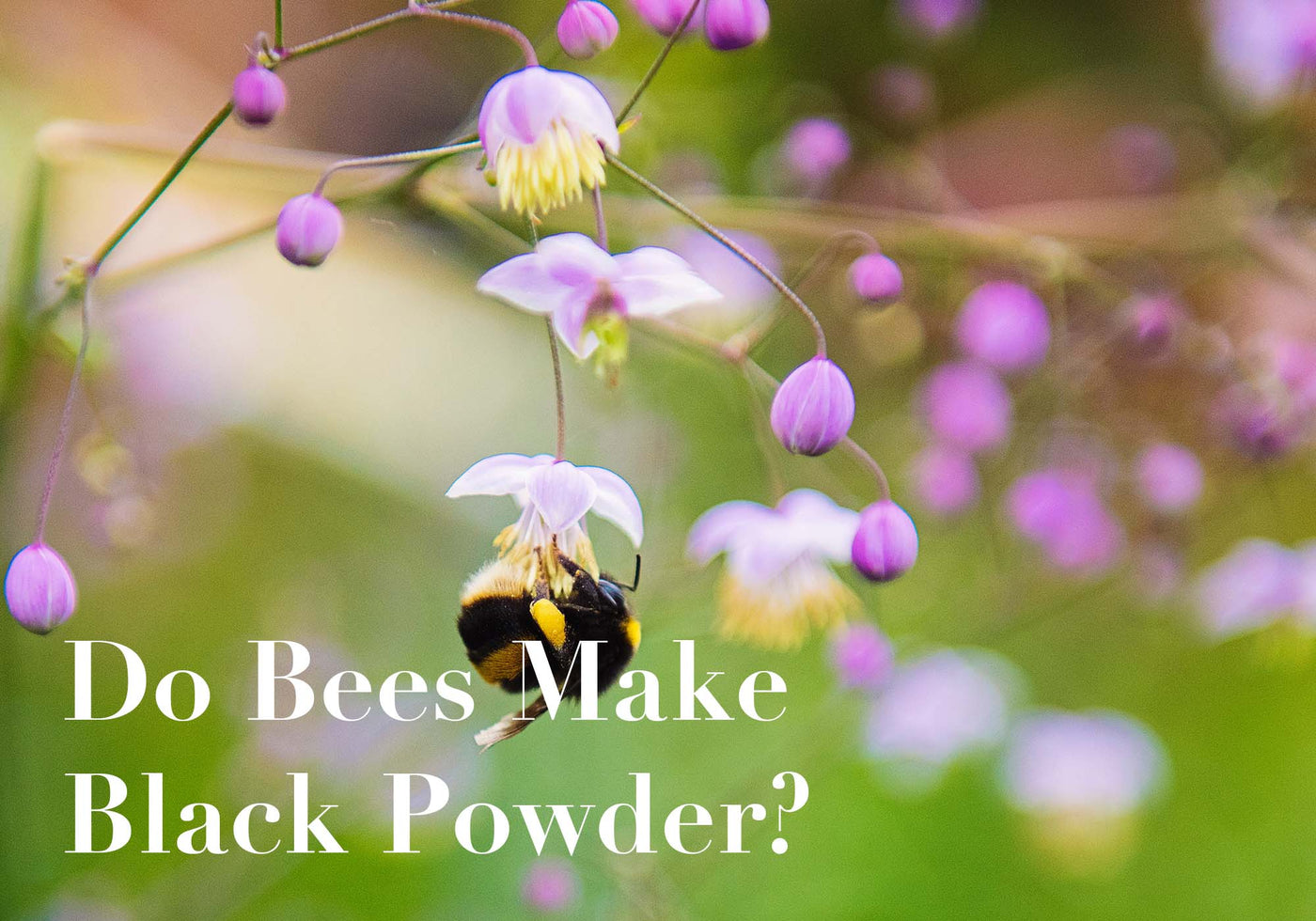Your Cart is Empty

The linkage between bees and bombs is distant ... but 100% there. Get ready for your brain to 🤯
When you hear the word fireworks, what comes to mind?
For many people this will be an exciting and colorful show that they can't wait for. But how do we get those displays of death-defying brilliance without firework powder! Well luckily there is black powder which consists mainly out a fuel (charcoal), oxidizer(saltpeter or niter)and stabilizers like sulfur mixed together in order have constant reactions with one another so eye opening displays can happen.
Fireworks are made with black powder.
In fireworks, the reaction would be slow, like a wood fire, if not for the oxidizing agent. Carbon in a fire must draw oxygen from the air, but the saltpeter in gunpowder provides the oxygen.
The charcoal in black powder is normally obtained from the burning of wood, peat, bones, cellulose, or other carbonaceous substances with little or insufficient air.
All the analyses indicate that land plants first appeared about 500 million years ago, during the Cambrian period, when the development of multicellular animal species took off.
When looking at the branches of the plant family tree, at the base, vascular plants—which include the trees, crops, and flowers came along sometime after liverworts, hornworts, and mosses.
Bees evolved from ancient predatory wasps that lived 135 million years ago. Like bees, these wasps built and defended their nests, and gathered food for their offspring. But while most bees feed on flowers, their wasp ancestors were carnivorous.
Back before the bees, wind is widely believed to be the only pollinator. The first pollinators accidentally spread pollen while feeding on flowers. In the millions of years since, bees and flowers have coevolved for mutual success.
Much of the carbon that turns into charcoal has had to come from wood, peat, bones or cellulose. In addition to sunlight & water, pollinators were a crucial part of increasing the breadth and depth of these plant species, as they intermix pollen which increases biodiversity, which leads to successively more well adapted plants.
The more plants due to pollination, the more carbon. The more charcoal available from millions of years of carbon sequestration by plants, the more material for making the black powder in fireworks.

So when you're staring up at the sky this year, you can appreciate the many chain reactions necessary for those beautiful fireworks to be exploding in the sky.
Comments will be approved before showing up.